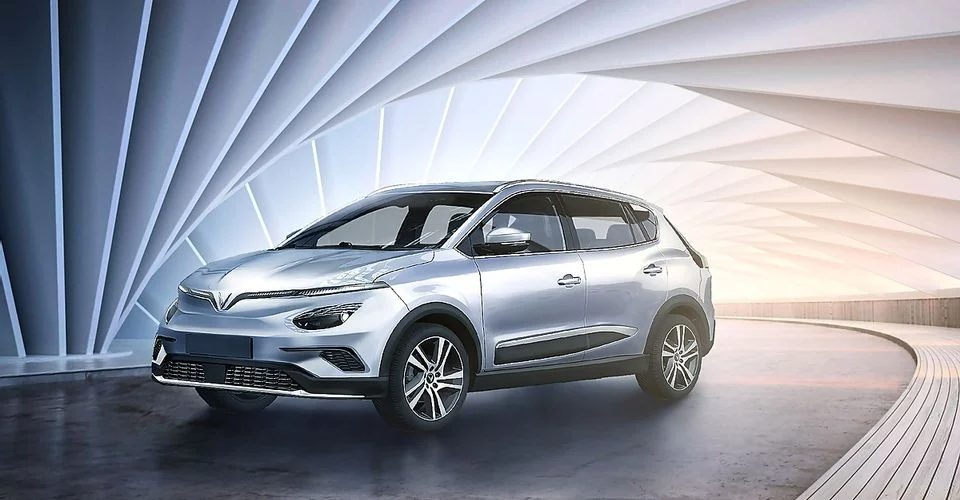Top 10 Best Mid-size Electric Cars in 2021
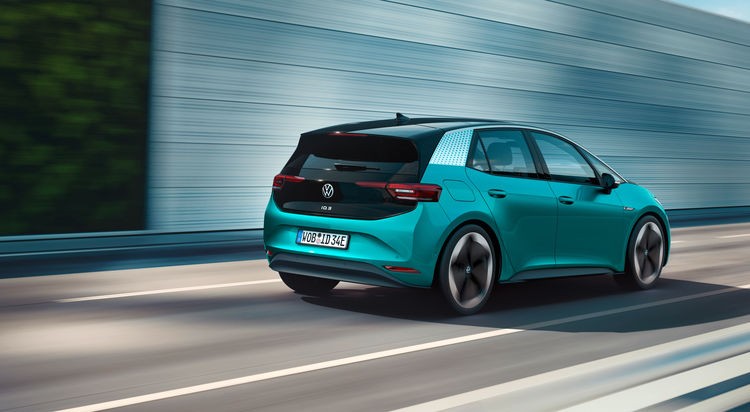 |
| Photo: volkswagen newsroom |
The UK government's changing financial incentives, which are intended to drive the adoption of electric cars, might well have made pricing up your next electric car a confusing task over the last twelve months. The plug-in car grant was cut from £3000 to £2500 in March 2021, with qualifying cars needing to cost £35,000 or less; and then cut again, in December 2021, down to just £1500 on cars priced at £32,000 or less. That makes the UK's support scheme one of the least generous in continental Europe, with countries such as France, Italy and Germany still offering buyer incentives worth up to €12,000.
Needless to say, it has suddenly became key for makers of mid-sized, affordably-priced electric vehicles to hit a pretty keen entry-level price point if they want to remain competitive for buyers on a budget. The equipment levels of such entry-level models from all kinds of brands have been reappraised of late, and their prices realigned - and more of the same is likely in early 2022.
The good news is that £32,000 (before the PiCG) can now be considered as much as you really need to spend for a usable, five-seat, five-door, all-electric hatchback. But which should you pick for an easy transition into electric car ownership? Even in this segment, there’s plenty of choice: front-driven hatchbacks play off against compact crossover SUVs, compact saloons and even the odd estate car. There are rear-wheel drive options here too, as well as cars with a dose of driver appeal; although with some of them, that only comes at a price.
Even if you need an EV with a real-world range above 250 miles, with room for several adult passengers and a usable boot, you can now find it here - and for not much more than than £32,000 outlay. If you know where to shop, you can actually find most of that for less than £30,000 in 2021. Read on to learn exactly where.
Meanwhile, if it's a smaller and cheaper supermini EV you're after, or a larger, more versatile and more luxurious family EV, our related top tens should summarise our current class favourites.
1. VW ID 3
As reported by Auto Car, the Volkswagen ID 3 has kicked off its makers post-Dieselgate rehabilitation very well. This Golf-sized hatchback became the first to use the group’s dedicated MEB platform, an entirely fresh rear-engined architecture, when it hit the market in 2020. That gave the ID 3 a relatively long wheelbase, boosting cabin space, and a rear-mounted drive motor with up to 201bhp and 229lb ft.
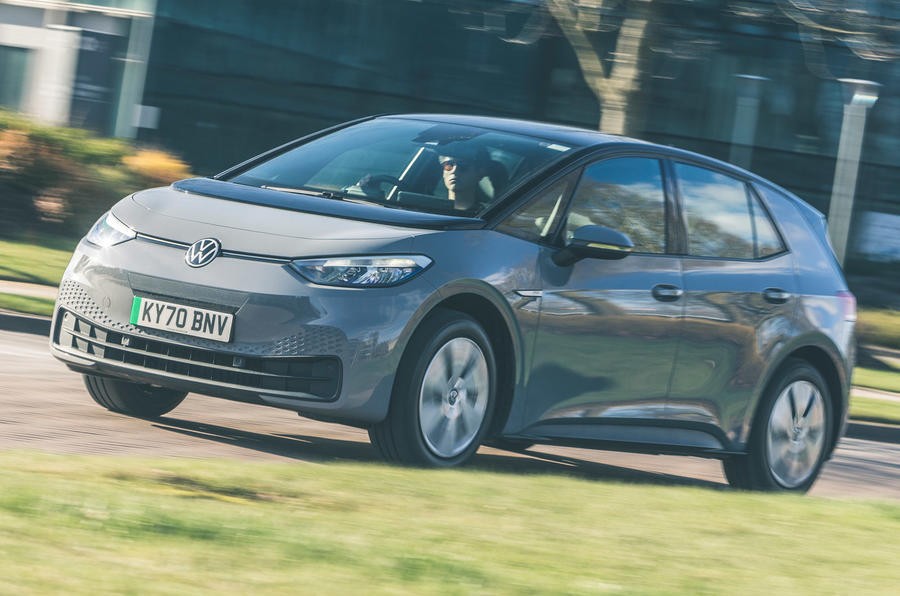 |
| Photo: Auto Car |
It launched with two battery sizes: the 58kWh pack lends a WLTP range of 261 miles, while the larger, pricier 77kWh battery ups that to 340 miles. Since then, VW has also added an entry-level ‘Pure Performance’ version with a 45kWh battery, which is rated for 218 miles and costs less than £30,000 - which is why you can even consider this car a more practical rival to an electric supermini, if that’s where your particular interest lies.
The ID 3 excels in terms of manoeuvrability and low-speed response and, although heavy by compact car standards and sitting on wheels as big as 20in in diameter, it would seem to hit the company’s high standards for ride sophistication, too. Handling is surprisingly agile, balanced and nimble, despite a fair bit of body roll.
The car is let down a little by its interior, which doesn’t have the same feeling of quality we expect from VW, and its touchscreen infotainment system suffer with some of the same usability woes as many other current Volkswagen Group products. But the cabin is certainly roomy and pleasant enough, and the driving experience gratifyingly simple and effective.
2. Kia e-Niro
The Kia e-Niro redefined how much real-world range and family-friendly usability we should now expect from an EV towards the more affordable end of the price spectrum. For just under £35,000, the car’s 64kWh battery pack enables it to comfortably travel 230 miles on a single charge; and further still (closer to 300-) if you stay off the motorway or around town. Not very many years ago, that would be the sort of range you’d be expecting from something far pricier, and probably with a Tesla badge on its nose.
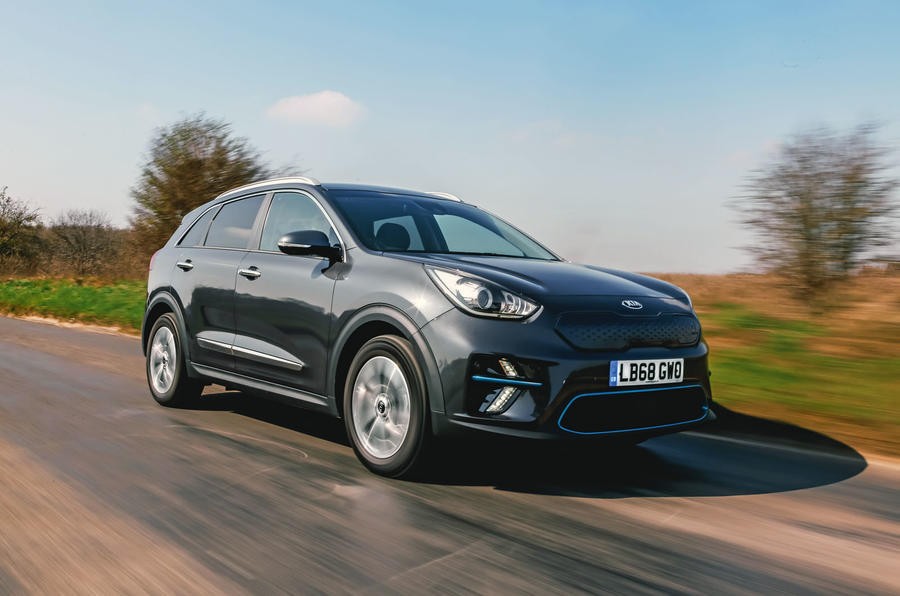 |
| Photo: Auto Car |
The car is now a few years old and looks a little dated both inside and out, with a replacement due in 2022 (prices for which were unconfirmed as these words were written, with it similar unclear whether any would be cheap enough to qualify for the PiCG purchase incentive). Kia and Hyundai are starting to launch electric models on a dedicated rear-wheel drive platform that enables even faster charging too, making the e-Niro look a little 'old hat' in some ways - although the larger-batteried, 201bhp versions will still charge at up to 100kW.
Needless to say, this car's genre-challenging relationship between range, usability and affordability means it still scores very highly. It also pulls ahead of the technically related Hyundai Kona because the e-Niro is a thoroughly practical, dynamically well-resolved and pleasant-to-drive EV. It’s roomier than almost every other EV at the price, and it rides and handles with creditable sophistication and accomplishment even compared with newer opponents. It may lack some of the accelerative potency of some, but as a well-rounded, truly usable affordable EV, the e-Niro remains a class act.
3. Peugeot e-2008
According to Top Gear, the Peugeot 2008 generation is more interesting than its predecessor for a multitude of reasons, and its more bespoke styling is the one that’ll hit you first. Hopefully not literally, but given it now comes with the option of near-silent electric power, that’s surely become a lot more possible.
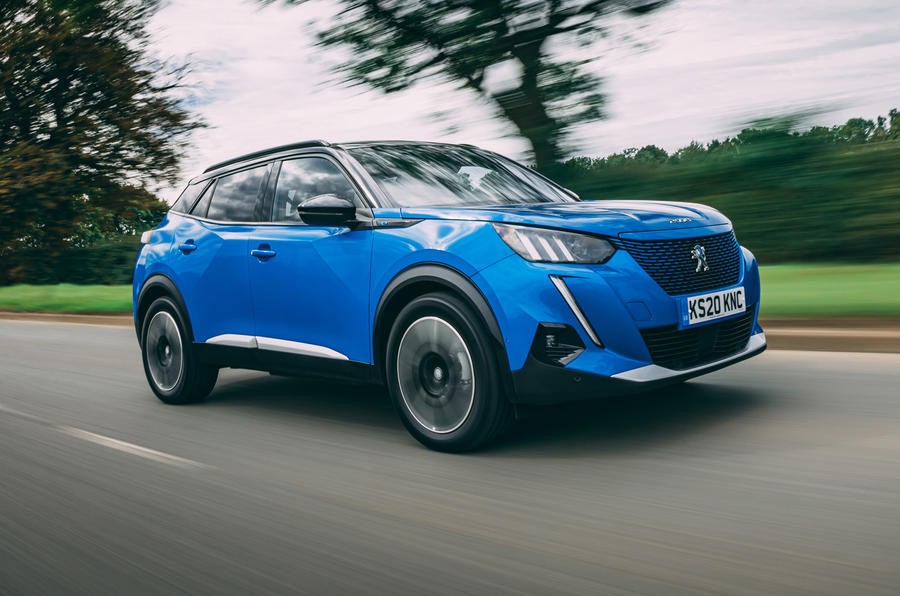 |
| Photo: Auto Car |
The car’s front-mounted, 134bhp electric drive motor and its 50kWh drive battery are shared with those of the Peugeot e-208 and Vauxhall Corsa-e. They make for fairly average performance (although drivability is good), and real-world range of between 150- and 170 miles, depending on your route and driving style. That’s broadly competitive for a five-seater crossover hatchback available for less than £33,500 - but it clearly won’t easily meet your every motoring need.
With its second attempt, Peugeot has made the 2008 a properly appealing thing in its own right. It looks way more special than it did before, like it's been sketched seperately to its base car where the last one resembled a 208 photocopied at 130 per cent. And with the combination of spangly 3D dials and electric power, it feels futuristic without any Back to the Future Part II naffness.
Crucially, though, if you want an electric car that's as easy to use as its petrol equivalent, the e-2008 is that too.
4. Nissan Leaf
The Nissan Leaf, in first-generation form, set the mould for the affordable electric car more than a decade ago – and in second-generation form, it’s still in among the list of contenders seeking to follow in its tread marks.
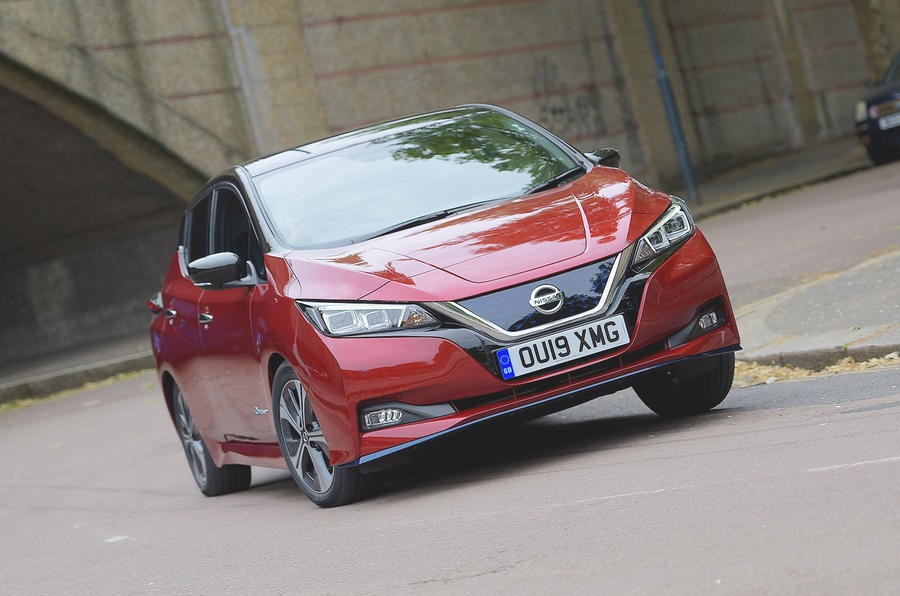 |
| Photo: Auto Car |
Battery capacity has been boosted so that, in standard guise, the Nissan has a WLTP-certified range of 168 miles: not a lot by today’s standards, but still broadly competitive and no doubt enough for some. However, this rises to more than 200- in the case of the range-topping 64kWh e+ version.
The Leaf’s also got significantly more power and torque than its direct predecessor; it performs fairly keenly, feels like a more rounded car to drive generally, and has plenty of daily-use practicality for a small family. Its interior is starting to look and feel pretty dated, though.
A value proposition that’s also improved, and is now on a par with that of a mid-market, conventionally fuelled family hatchback once you take the government’s PiCG grant into account, cements the car’s position. As things stand, the Leaf is one of the cars in this chart that does qualify for the UK PiCG, although only in smaller-batteried form and lower-level model trim.
5. Vauxhall Mokka-e
Britain’s everyman car brand Vauxhall is out to reinvent itself with the Mokka-e. This fashionable, good-looking compact crossover shares its platform and running gear with the Peugeot e-2008 and DS3 Crossback E-Tense, and although it’s slightly less practical than the aforementioned Peugeot, it’s broad-bonnetted styling is even more impactful.
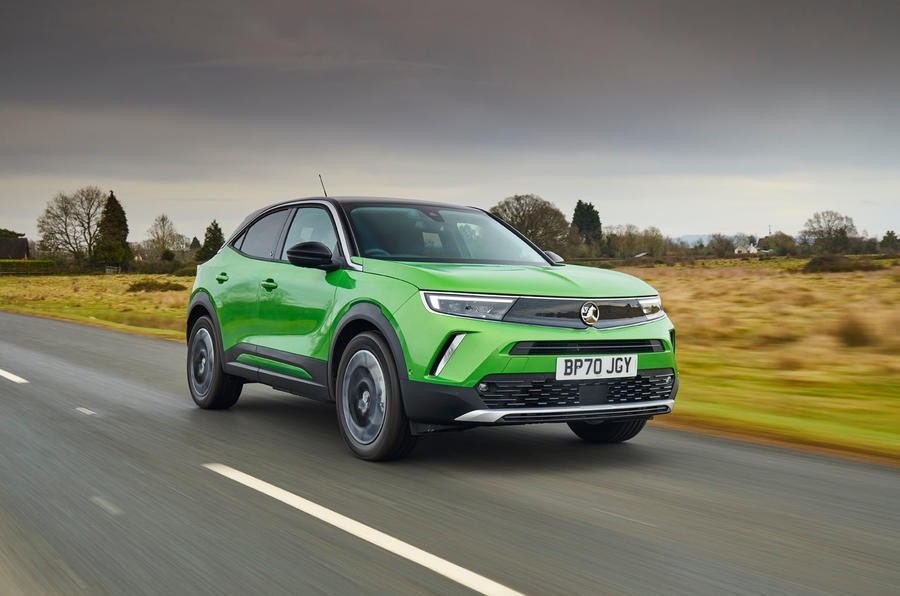 |
| Photo: Auto Car |
Vauxhall’s 50kWh drive battery grants a real-world range of about 160 miles, and recharging the battery while out-and-about can be done at up to 100kW, for an 80 per cent charge in around half an hour.
The Mokka’s cabin is less spacious than some in this chart, but it’ll still accommodate adults in the second row. Boot space is reduced to a little over 300 litres in the Mokka-e; another practicality showing that leaves the car with plenty of prove elsewhere.
The Mokka-e’s performance is fairly strong, and its ride and handling disguise its raised ride height pretty well. The driving experience isn’t likely to be the reason you buy this car, though; if you like the way it looks, it’s probably just about practical-, usable- and credible enough to drive to reward your interest.
6. Tesla Model 3
The Tesla Model 3 is an American four-door saloon car with rear- or -four-wheel drive, seating for five people at a pinch, and a touchscreen inside. Sure, it’s all-electric, but it hardly sounds A Verified Big Deal, does it? But the Tesla Model 3 is one of the most important big deals of the 21st Century so far.
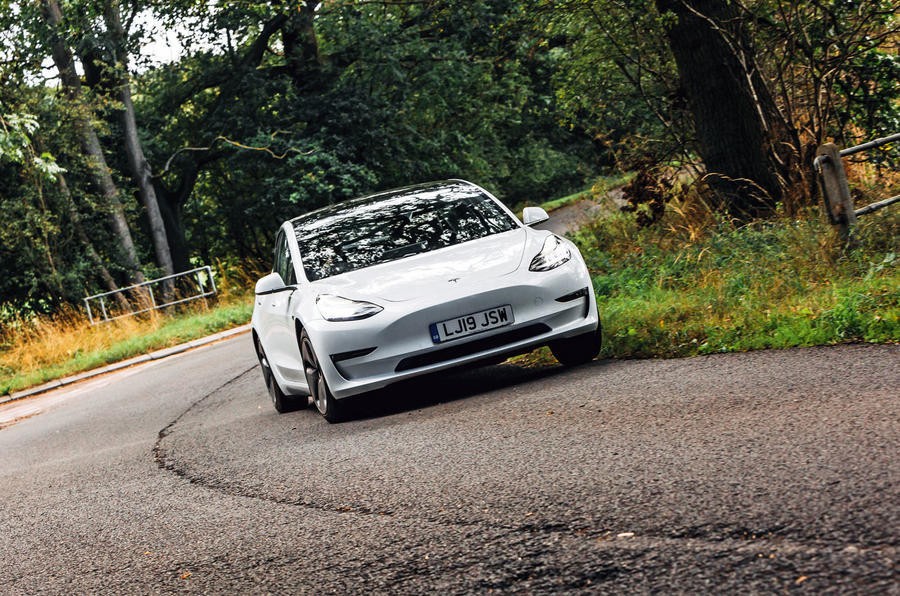 |
| Photo: Auto Car |
This is Tesla’s long-awaited affordable entry-level car, designed to take on the best-selling likes of the BMW 3 Series, Audi A4, and Mercedes C-Class, not to mention their slow-off-the-mark electric cousins. And thanks to Tesla’s viral, household name status and the ambition of the car’s features, the Model 3 has become a phenomenon.
The Model 3 was Top Gear’s 2019 saloon of the year, beating the old guard and maintaining its lead of the new EV pretenders. It’s been in production since mid-2017, but even heading into middle age, nothing on the market has yet managed to beat the Model 3 on all fronts. While not without flaws, it is quite simply one of the most interesting, compelling cars in the world right now, Top Gear said.
7. Citroen e-C4
If you like the idea of EV ownership because it represents new and unconventional thinking, you’ll probably like the Citroen e-C4. It’s the quirkiest car in this chart thanks to its angular, free-form, Citroen-GS-tribute exterior styling and its pseudo crossover hatchback body, and it has a roomy interior packed with innovative features like a dash-mounted holder and stowage drawer for a tablet PC.
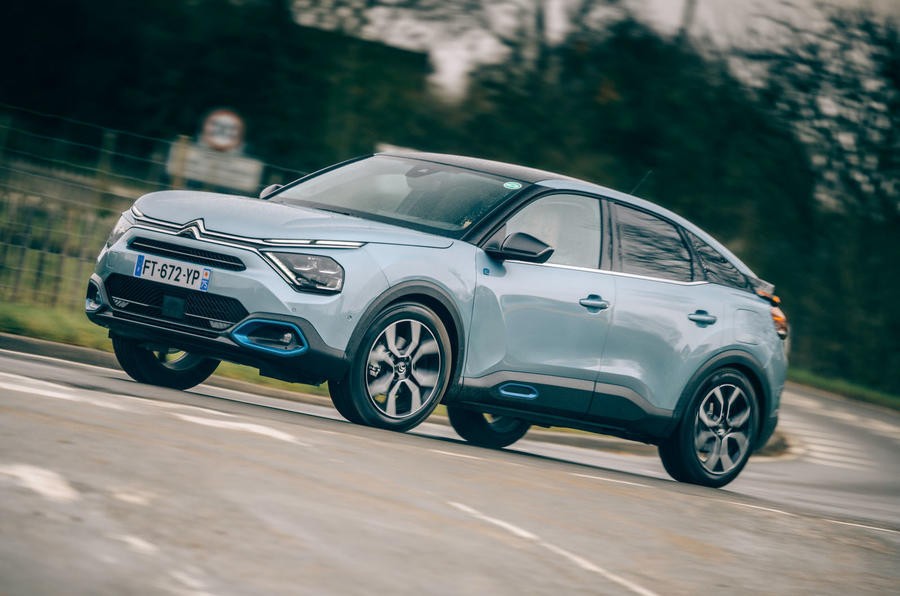 |
| Photo: Auto Car |
This is another electric car based on Stellantis’ eCMP model platform, with a 134bhp electric motor and a 50kWh battery. Citroen claims up to 217 miles of WLTP range for the car - and it has a fairly aerodynamically efficient shape and a wheel design likewise configured for low-rolling resistance, so does slightly better on real-world range than most of its group siblings. Even so, expect 180 miles from it at a fairly gentle pace, and on a warm day.
The e-C4 is one of several EVs from the Stellantis Group of automotive brands (Vauxhall, Peugeot, Citroen, DS Automotive, Fiat, Abarth, Jeep & Alfa Romeo) that has been caught out by the UK government's change on 'PiCG' incentive support, with a starting price just above £33,000.
8. Cupra Born
The VW Group's emergent performance brand Cupra has thought small with its first dedicated electric car, the Born. Instead of following sister brands Skoda and Audi and launching a crossover SUV related to the Enyaq iV and Q4 E-Tron, it has hitched its first EV to the smaller VW ID 3. So the Cupra Born is a hatchback rather than a full-sized family car, although it's a slightly pricey one, and has strakey styling, and sporting intentions that it struggles somewhat to deliver on, Auto Car reported.
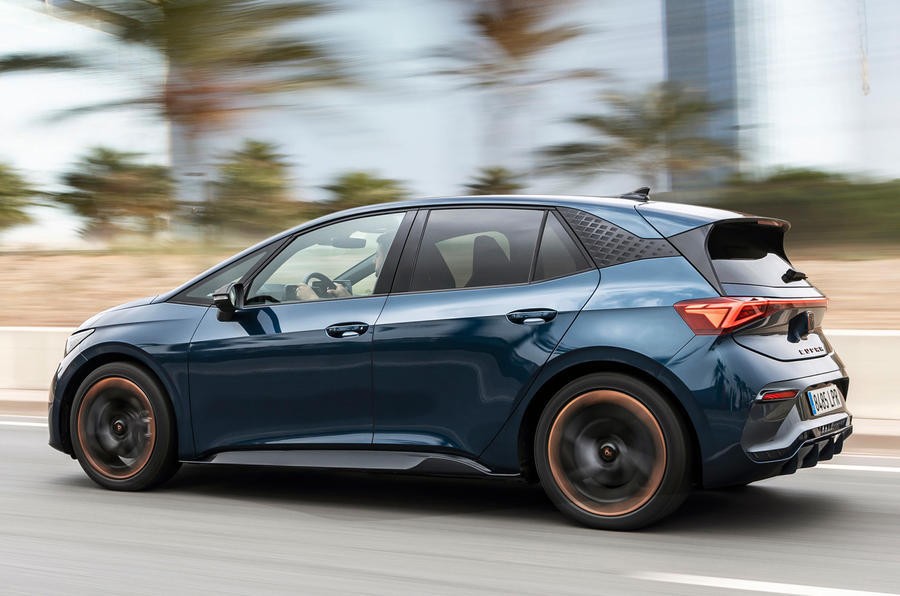 |
| Photo: Auto Car |
On Spanish roads, the car failed to clearly differentiate its driving experience from that of the related VW ID 3. Although it has evident maturity and refinement, it's little more exciting or involving than its VW relation, and considerably less so than the likes of the Kia EV6. On UK roads, however, the Born make a better first impression. A full UK road test awaits.
UK prices will be confirmed soon, but are likely to narrowly miss out on PiCG support. Power outputs will range from 148- to 228bhp, and batteries from 45- to 77kWh. Worth the premium over a VW ID 3? It very much remains to be seen.
9. Hyundai Kona Electric
The Kona Electric was one of the first cars to bring respectable range and practicality to the EV market at a fairly affordable price. It now looks like a car with commendable range (if you opt for the 64kWh version) but, just as with the Kia e-Niro, bigger-batteried versions are now on the wrong side of the pricing threshold for qualification for the UK government’s plug-in car grant.
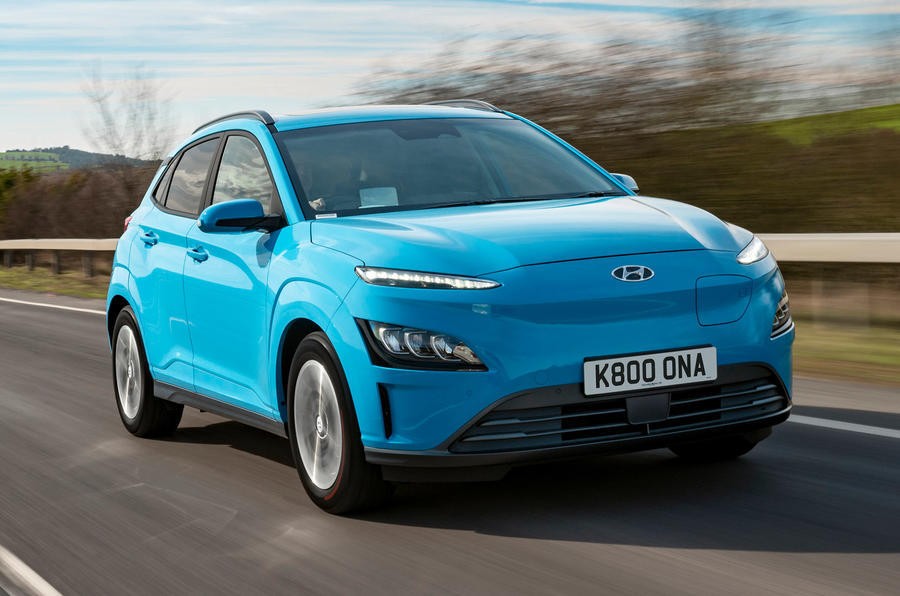 |
| Photo: Auto Car |
The car’s performance is strong in upper trim levels, more ordinary if you have a 39kWh model, but it’s a little remote, soft and inspiring to drive, and suffers somewhat with limited front-drive traction in slippery conditions.
The Kona Electric was a bit of a game-changer when it was launched. Now, a couple of years down the line, there’s more competition and it’s not quite as good value. But it’s still in the mix. One of the best all-round, reasonably priced EVs you can buy today, if range is your key concern when it comes to all-electric motoring and you can’t stretch to a Tesla, Jaguar I-Pace or similar, the Kona has to be on your shortlist. Could easily be your only car.
10. MG 5 SW EV
Old-fashioned value for money remains a hard thing to find in the market for electric cars, but the MG 5 SW EV certainly supplies some. At the end of 2020, MG made waves by offering the family-hatchback-sized MG 5 (it's an estate actually; a little bit like a mid-90s mkIII Vauxhall Aston wagon that's been to the future) with a 200-mile range, for less than £25,000 after the UK government's PiCG grant. Then, in mid-2021, it brought in a revised version of the car with a larger battery and some 250 miles of claimed range, and then made it available for very little more (from £26,495). If you're buying a mid-range, petrol-powered C-segment estate in 2021, there's a good chance you'll be paying more for it than this.
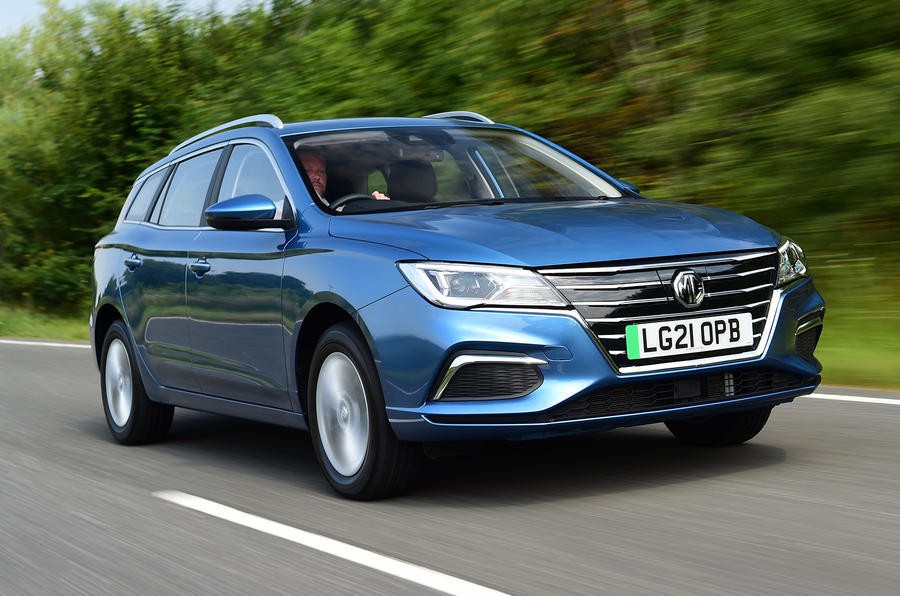 |
| Photo: Auto Car |
The updated MG 5 can rapid-charge at up to 100kW, so it's not the kind of EV you'll be waiting hours for while it tops up from the mains. It's got a drive motor with 154bhp and 192lb ft, so it's a very respectable performer, too. And it's got a 464-litre boot, which is enough for plenty of family paraphernalia.
Cabin quality is pretty low-rent; front-driven traction is modest at best; and body control can be quite loose on changable surfaces. But this is budget family EV motoring, after all - and since few other cars offer it at all, there's definitely a place for it.
 | Top 10 Best Cosy Crime Novels If you are looking for a warm Christmas night alone, sipping a hot cup of cocoa, and enjoying your time reading, these cosy mysteries in ... |
 | 9 Best Books About Travel In 2021 With Covid-19 keeping us from traveling and exploring new destinations, these books will help you satisfy your craving for flying around the world. |
 | Top Legislator Begins Official Visit to India Chairman of the Nation Assembly Vuong Dinh Hue arrived in New Delhi on December 15, starting his official visit to India. |
Recommended
 Handbook
Handbook
Vietnam Moves Up 8 Places In World Happiness Index
 Handbook
Handbook
Travelling Vietnam Through French Artist's Children Book
 Multimedia
Multimedia
Vietnamese Turmeric Fish among Best Asian Dishes: TasteAtlas
 Handbook
Handbook
From Lost to Found: German Tourist Thanks Vietnamese Police for Returning His Bag
 Handbook
Handbook
Prediction and Resolution for the Disasters of Humanity
 Handbook
Handbook
16 French Films To Be Shown For Free During Tet Holiday In Vietnam
 Handbook
Handbook
Unique Cultural and Religious Activities to Welcome Year of the Snake
 Handbook
Handbook


